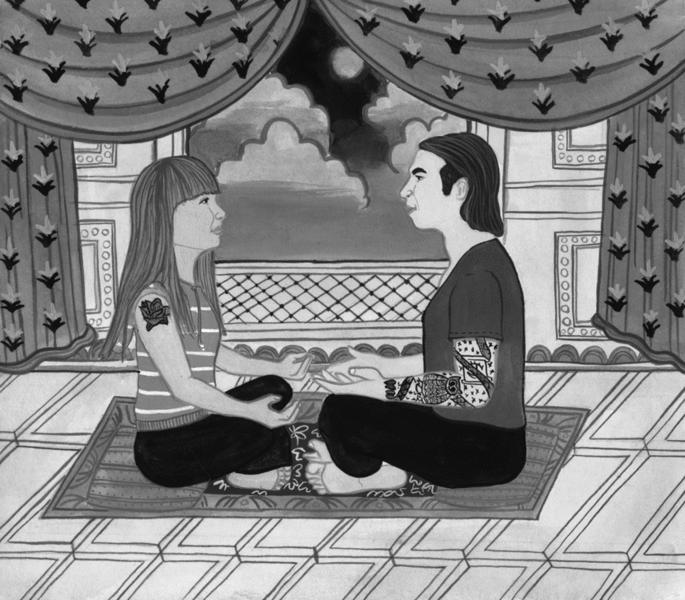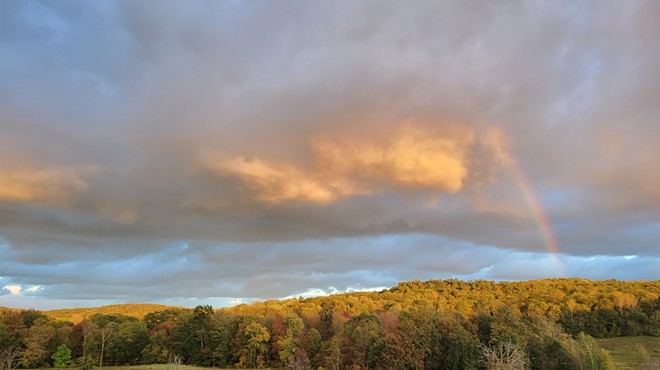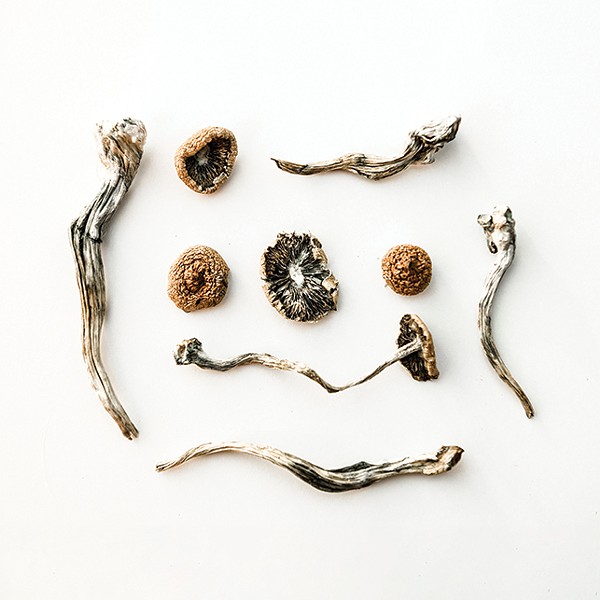For this reason, ecstasy is the word most closely connected with Tantra in the popular imagination. The abundant references to ecstasy in Western writings about Tantra have become a way of marketing the tradition. This emphasis on ecstasy is both understandable and somewhat unfortunate. Our own teacher, Dr. Jonn Mumford, titled his book on sexual Tantra Ecstasy Through Tantra. Margo Anand has created a virtual industry based on the word with her books The Art of Sexual Ecstasy, The Art of Everyday Ecstasy, and The New Art of Sexual Ecstasy. One of the most popular videos on Tantra is Ancient Secrets of Sexual Ecstasy. Ecstasy sells, and there is no denying that Tantric and Neo-Tantric practices, both sexual and nonsexual, can lead to ecstatic states.
So what is ecstasy? It is a state of rapturous delight, sometimes considered synonymous with bliss. However, unlike bliss, ecstasy often has a sudden, unexpected quality. Ecstasy is both “an overpowering emotion or exaltation” and “a state of sudden, intense feeling” (as Webster’s defines it). Ecstasy often manifests both as an intense and an unexpected experience of elation or a “high,” the likes of which a person has never, in many instances, felt before.
By their very nature, ecstatic feelings are often fleeting. Nonetheless, they may briefly free a person from the emotional confines of mundane life. This is implicit in the original Greek meaning of ecstasy: to be taken outside of one’s self or to be put out of one’s wits. At their best, ecstatic experiences can also produce lasting change—an expansion into new psychic territory through exposure to new sensations, emotions, and states of consciousness. Such experiences can be a blessing, since ecstatic states often afford us the opportunity to recognize something different and new, a potential for experience in life that we had previously been unable to perceive. For example, when a person suffering from depression has an ecstatic experience, that person can sometimes discover a new range of emotional possibilities.
When expansion takes place too rapidly, though, contraction may follow, and it may take a while to regain equilibrium. For this reason, we generally think it best to explore and expand gradually, with the goal of discovering subtleties, rather than to pursue major breakthroughs and ecstatic, transformational experiences.
There are simple ways to experience this process of expansion and contraction directly. Just as human sexual activity involves an intimate interplay between relaxation and arousal, aggression and gentleness, tumescence and detumescence, Tantric practice is all about exploring life’s processes: ebb and flow, sound and silence, solitude and union. The more fully you recognize the nature of these processes and know them in your own body, the easier it is to embrace and accept the conditions of life.
Preparing for ecstasy can begin with the breath. A simple exercise you can do at home will show you how the breath opens you to awareness of your physical self and can stir changes that may help you discover the ecstatic potential of any given moment. For this exercise, you will need to have within reach a watch or clock with a second hand, a notepad or journal to record your experiences (we advocate keeping a “spiritual journal”), and a pen or pencil.
Step 1. Sit in a comfortable posture, with your spine straight. Make note of the time, including seconds. Take in a deep breath, filling the lungs completely. Lower your chin toward your chest, but do not strain your neck. Hold your breath, lungs full, for as long as you can. When you must exhale, first take in a small sniff of air; then empty the lungs. Throughout the experience, observe how your body feels, particularly your throat and ribcage. Note how long you held your breath, and write about your experience, recording physical sensations you perceived and any other observations. Then relax a moment.
Step 2. Inhale again, this time filling your lungs only about two-thirds full. Repeat the steps described above. Notice how you feel and observe any specific sensations and thoughts. Record how long you held this breath and what you experienced. Were there any differences in your physical responses to the two ways of holding air in the lungs? Consider what the broader implications of this exercise might be, and write out your thoughts.
There are many other Tantric practices that explore the interactions among the physical body, the environment, and your consciousness. With practice, and through exercises such as this one, we can prepare ourselves to contain and appreciate the ecstatic when it comes to us. We can also learn to discover it in unexpected places, even in the midst of adversity. It can be valuable to get personal guidance from an experienced teacher, but the most important thing is to cultivate your capacity to be aware. That way, you won’t miss the ecstasy when it comes to you.
In the classes we teach about Tantra, we seldom talk about ecstasy directly. If we were to emphasize it as a goal, we would run the risk of engendering false expectations. In addition, suggesting that ecstasy is an objective of Tantric practice, while not false, is lacking in context. It can lead people to imagine that ecstasy will be theirs if they follow a set program—an attitude of seeking that takes them out of the immediate experience and interferes with their capacity to observe without judgment or expectation. We do encourage our students to understand and discover the sources of their own, authentic pleasure, since this helps to clear a psychic space for the ecstatic to emerge. Thus, we generally prefer to quote Paramahansa Satyananda Saraswati, who once said people should do practices “because something interesting might happen.”
Although Satyananda was talking specifically about Kriya Yoga, the same principle should apply to Tantric sexual practice or virtually any form of Tantric work. Trying to experience ecstasy is likely to lead to disappointment. Tantra is not about pursuing a specific goal. Rather, it is about being an experimenter, an explorer of you own consciousness. Approaching every experience with curiosity, and the recognition that it may lead to something interesting, leaves us open to the ecstatic potential that exists in every moment, without demanding that it be fulfilled. In this context, ecstasy may take us by surprise.
Mark Michaels (Swami Umeshanand Saraswati) and Patricia Johnson (Devi Veenanand) are co-authors of The Essence of Tantric Sexuality and Tantra for Erotic Empowerment (March, 2008). A devoted married couple, they have been teaching Tantra and Kriya yoga together since 1999 and offer classes in the New York metropolitan area and online; www.tantrapm.com.

















